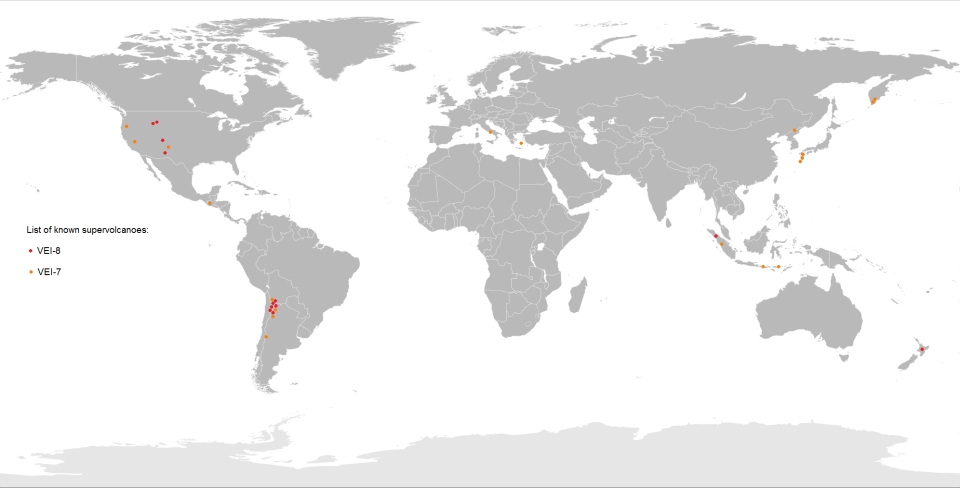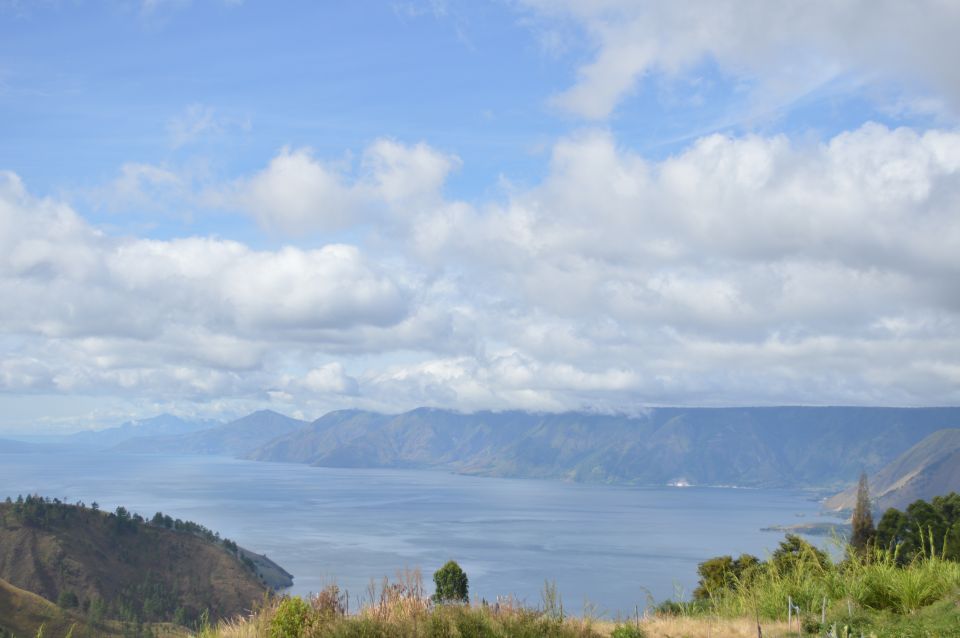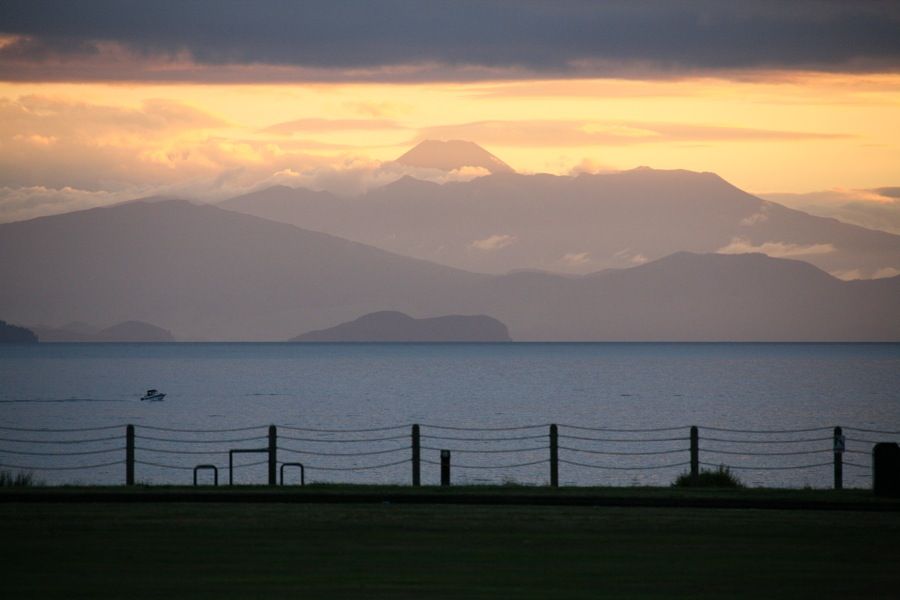What is a supervolcano?
A supervolcano is a volcanic system that has had a very large eruption in the past. These eruptions produce more than 1,000 cubic kilometres of ash and pumice. Eruptions of this size usually create a caldera or large basin. This is because so much material has erupted out of the magma chamber the ground above collapses.
Supervolcanoes do not always have super-eruptions. They can also have much smaller eruptions.
Supervolcanoes occur when magma in the mantle rises into the crust but the magma can’t break through. Pressure builds in a large and growing magma pool until the crust is unable to hold the pressure. This can happen at hot-spots or at subduction zones.
What happens in a super-eruption?
Super-eruptions are explosive. Gases dissolved in the erupting magma tear the magma apart. There are two different kinds of activity in a super-eruption:
- A tall column of ash rises into the air
- Fragments move down the slope of the volcano as a hot liquid called a pyroclastic flow.
Pyroclastic flows are very dangerous and destructive. These flows only travel a few kilometres, while ash can spread over huge areas.
A super eruption in the Taupō Volcanic Zone could cover most of the North Island in over a metre of ash. The spread of ash would depend on the wind direction during the eruption.
Super volcanic eruptions can cover huge areas with lava and volcanic ash. The spread of ash in the atmosphere can cause long-lasting climate change. This is because the ash stops energy from the sun reaching the Earth’s surface. Super-eruptions could cause a lowering of temperatures and start an ice-age.
In the last 2.6 million years there have been 10 super-eruptions worldwide. Four of these have been in the Taupō Volcanic Zone. The world's most recent super eruption was 26,500 years ago in the Taupō Volcanic Zone.
Ready for a quiz? Try the "Supervolcanoes" activity.






